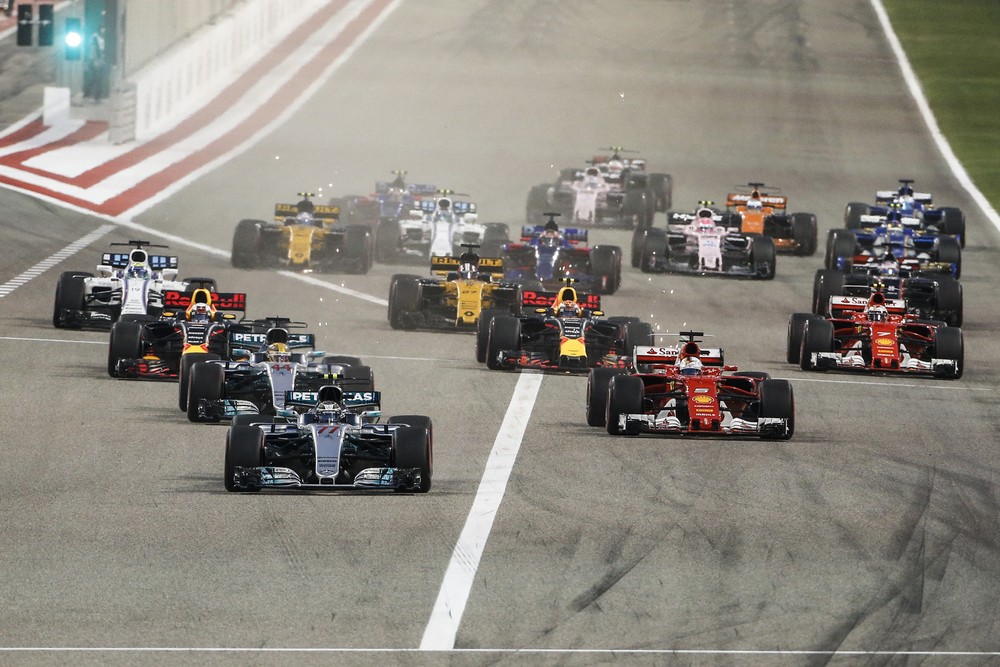With the support of Fujitsu, the operators of the legendary Nurburgring are showing how history, the present and the future can be optimally combined - for greater safety using advanced AI technology. Especially on the one of the world's most challenging race tracks: the Nordschleife. There, the unique tourist drives in particular can become even safer.
The first installations as well as tests and analyses for this groundbreaking project have already been underway for one year. HD cameras were installed along a 2.8-kilometer section and connected with fiberglass. Fujitsu developed an AI system that immediately registers safety-relevant incidents and forwards them to operations management. At future races, track days, tourist drives and test drives by the automotive industry, drivers can be warned immediately of dangers via LED displays on the track, so that everyone involved can assess the situation more quickly and react accordingly.
After a year of successful test installations, the partners involved are now drawing a thoroughly positive balance, so that in the next two years the entire Nordschleife can be equipped with the AI-based system without any gaps. The new system is scheduled to be fully operational as early as the 2025 season and will then monitor around 21 kilometers of the Nordschleife.
"The project is of outstanding importance to us. It equips the world-renowned Nordschleife for the future in terms of safety. For us, it is one of the most extensive innovation measures in the soon-to-be 100-year history of the Nurburgring. Artificial intelligence is the best solution here, because no one would be able to monitor and evaluate the images from so many cameras in real time and take appropriate action. With Fujitsu, we have a partner that not only offers the necessary expertise and suitable solutions, but also shares our passion for this historic track," the managing directors of Nurburgring 1927 GmbH & Co. KG, Christian Stephani and Ingo Boder, explain.
The Nordschleife is probably the best-known and longest permanent racetrack in the world. No fewer than 73 curves and particularly challenging sections make the almost 21-kilometer-long track so appealing. For racing drivers, but especially for private drivers who want to test their driving skills apart from the race dates, this is a real challenge. It is not without reason that the "Green Hell," as it was named by racing legend Jackie Steward, enjoys a very special reputation worldwide.
In order to ensure the safety of drivers and the public, dangers and incidents are currently reported by radio announcements from so-called track marshals and signaled by waving flags. Naturally, valuable time passes until help is actually on the way and the track is closed if necessary. In the future, with help of the equipment with cameras and artificial intelligence, the aim is to support and accelerate these processes significantly and to lay the foundations for irregularities to be automatically detected and lead to appropriate measures in real time.
"Especially at the Nurburgring, where racing enthusiasm and tradition come together, safety is the top priority in the interest of professional and private drivers, as well as in the interest of the race track and the organizers. Perfect organization and well-rehearsed processes are already an important basis here. The use of smart technology makes the Nurburgring even safer and innovates the working environment of the employees in the area of track safety. This according to the well-known motto: "Everyone praises what Nurburgring tests", which not only applies to the automotive industry, but can now also be applied to the digital transformation and innovation of the track. Based on this solution, we are already discussing the application of the technology e.g. in public road traffic or other scenarios," Jorn Nitschmann, Head of Digital Transformation Unit DACH at Fujitsu Services GmbH sums up.
For this solution, Fujitsu has taken an on-premises approach to ensure minimal system latency and uses a combination of AI methods to meet the specific requirements of the Nurburgring. The software includes AI object recognition to identify vehicles or people on the track. Through image segmentation, it can also distinguish between the race track, gravel and grass surfaces, as well as guardrails and safety fences. In the event of a safety issue, a downstream system alerts incident command and can trigger additional traffic light warnings and initial messages via LED displays at the track. Thanks to its modular design, the system is highly scalable and can be easily extended to new sections of track.




